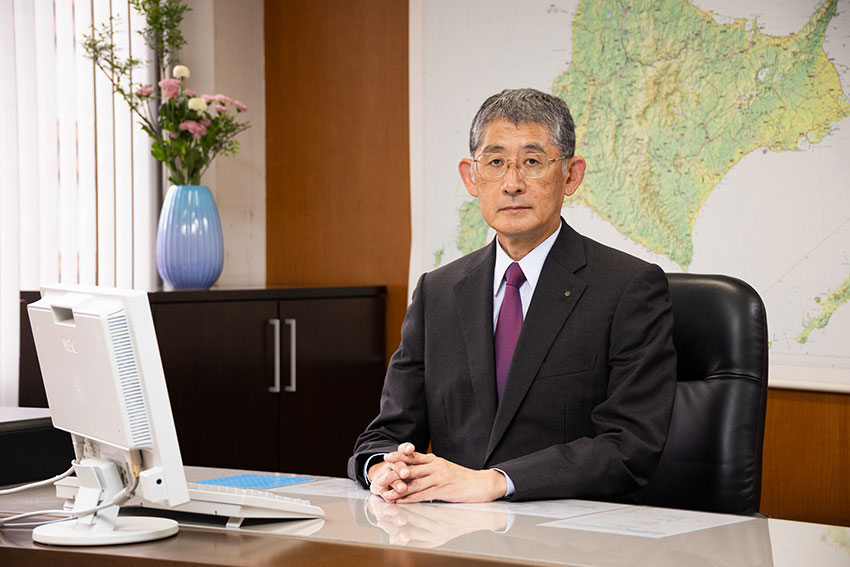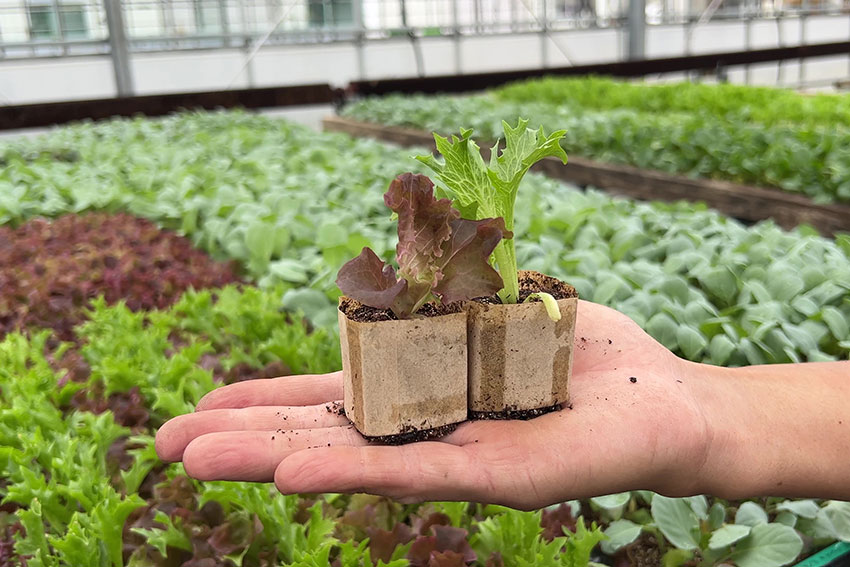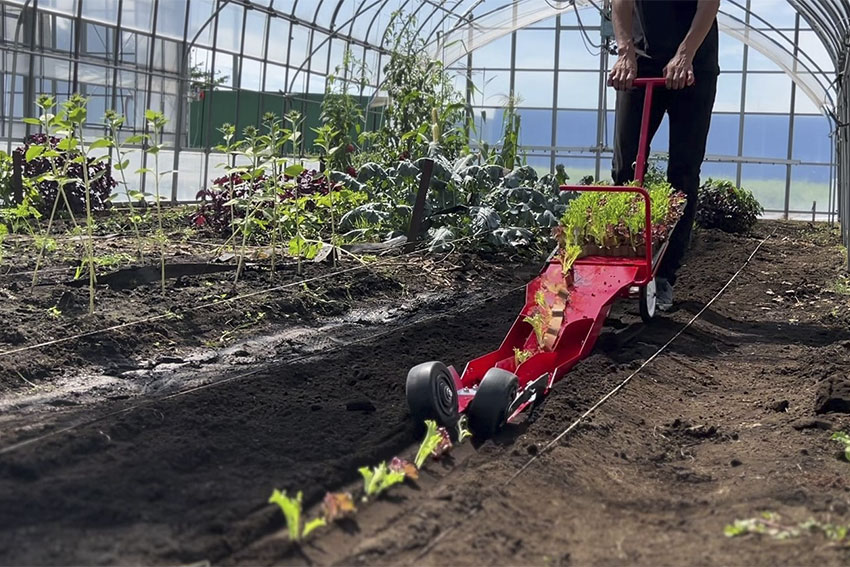In this insightful interview, Shu Ishikuri, President of Nitten Co., Ltd., discusses the company’s strategies for expanding internationally, embracing sustainable practices, and adapting to the challenges of Japan’s aging population and declining sugar consumption.

There has been a record growth in Japanese food exports. Just last year, it crossed JPY 1.45 trillion, and the government wants to push this even higher. They’ve set quite an ambitious target of achieving JPY 5 trillion by the end of the decade, and they’re doing this by pivoting to a more globally focused approach, investing in a new promotion center, and funneling resources to overseas marketing. Do you believe this target is achievable in this timeframe, and if so, what are some opportunities that these developments present for your business?
I’m not sure about the possibility of achieving the government’s goal, but I believe the direction is right. We need that system. I think if that system were to support new businesses, the demand for Japanese food abroad would increase profits for domestic producers and activate the local economies, which is necessary.
Our company is also planning to export food products, so we would appreciate the preparation of a new system to promote overseas markets. I believe that national policy and the efforts to spread information about Japanese food culture and improve brand power will provide strong support to our business. For food products, our business has been restricted to the domestic market so far, but considering the decrease in the Japanese population, we must change our strategy to expand abroad. For that purpose, government support is very attractive to us. That gives us an opportunity to try new strategies, so I appreciate the government’s support.
With our Paper Pot and animal feed business, that is a little different. Paper Pot already has its own market, and we are trying to open our own market for animal feed by ourselves. So, without government support, we will be able to manage it by ourselves in these two areas of our business.
You mentioned the need to improve brand power overseas. Being a Hokkaido-based company is a great advantage for you because for foreigners, especially Chinese or Asian people, Hokkaido food, whether it’s dairy or other products, is very popular. To what extent do you leverage Hokkaido as your home when you communicate with your consumers, and what do you think are the key advantages of Hokkaido-made products that can contribute to the global market?
I think the Hokkaido brand is quite attractive in Southeast Asia, in countries such as Thailand, Indonesia, and Vietnam. When I visited Jakarta, I saw a bread called Hokkaido milk bread. I believe the image of Hokkaido is good for them. When I travel abroad, I always think we should make the Hokkaido brand more valuable, especially since most of our products originated in Hokkaido. I believe we have a chance to open new markets using the Hokkaido name brand.
One challenge facing the food sector in Japan is the declining population and demographic change. This is being felt particularly in the agriculture industry. The average age of the workers in this area is over 65 already and getting older. This poses challenges around production bottlenecks and barriers to further expansion. How are you tackling this challenge?
On this issue, I will focus on the sugar business. We have two main bottlenecks. One is sugar beet production, and the other is the logistics of the products. As you mentioned, the average age of Japanese farmers is quite high. For the stable production of sugar beet, we introduced new, attractive varieties of sugar beet and labor-saving systems. Our proposals are effective for both older farmers and successive young farmers.
In 2023, we had a big disease problem that decreased the sugar content of the beet. To battle that disease, we usually need to apply many kinds of chemicals, but our disease-resistant variety does not need so many agricultural chemicals, so that has resulted in lower labor and chemical costs. We also introduced an herbicide-tolerant variety. This variety only requires a single dosage of special herbicide, which results in a significant reduction of weeding work in the summer.
Together, these varieties result in an improvement in labor productivity of sugar beet cultivation and production and are more environmentally friendly.
Another thing we have done is to introduce the latest European harvester that has more capacity than a conventional Japanese harvester. The Japanese harvester can only do one line at a time, whereas the European one can do six, and the speed is higher as well. Together, I would say it is an improvement of ten times the capacity, and that will help solve some of the production bottleneck problems. Now, there are four big harvesters working in Hokkaido.
With logistics, we need help securing drivers and workers. To solve these problems, we are introducing larger vehicles and considering sharing facilities with other companies. Also, we are working to strengthen rail and sea long-haul transportation.

We also make the Paper Pot product. Those are used for sugar beet transplantation, but nowadays, in Japan, direct sowing is becoming the major method, unlike Paper Pot transplantation. As a manufacturer of paper pots, we want to sell them, but we also promote direct sowing when we judge it to be beneficial for farmers, even if it is not beneficial for ourselves. We need to respect their needs because, without them, we cannot survive.
Regarding the new varieties that you mentioned, some challenges they are addressing are not only problems Japan is facing but also problems that are being faced around the world that will continue to get worse. Do you intend to export these varieties overseas to introduce them to farmers in other countries?
Actually, these varieties come from Germany. Before, we did the development of new varieties. Now, we don’t develop them by ourselves, but there is a company in Germany that has developed many kinds of varieties. They brought some varieties to Japan, and we tested them for several years, and then we selected the ones that were best for us. For example, one was good for diseases, and another was good for sugar content, etc.
Your Paper Pot product and associated Chain Pot system help tackle the challenge of sustainability. There’s been a growing realization that the use of petroleum-based plastics and single-use plastics is having a negative effect from a waste point of view and from chemicals leaching into the soil. Could you tell us about how your company developed the Paper Pot technology, and do you believe that this technology can replace plastic pots in large-scale agriculture operations?
Paper Pot was originally developed for growing sugar beets over 60 years ago for the purpose of expanding the growing season of sugar beets under the cold climate of Hokkaido. This style is unique and is carried out mostly in Japan, and recently in North China and some European countries.
Most sugar beet farmers around the world use a direct sowing system. Generally, they don’t use plastic pots for sugar beets, as direct sowing is preferred.
In terms of Chain Pot, they were developed over 30 years ago, during the improvement of Paper Pot. Chain Pot is for growing vegetables and is expected to replace Plastic Pots.
I think there are five advantages for farmers using the Chain Pot system. The first is a reduction of the hours needed to do the transplant. The second is a reduction of labor since fewer hours are needed to do the transplantation. The third advantage is that it only requires a limited initial investment, which is particularly beneficial for small-scale farmers. The fourth is that the system is easy to maintain since it does not use an engine. Therefore, farmers save maintenance costs and time. Finally, it’s easy to handle using our simple “Hippari-kun” transplanter, which is a unique product that we developed 30 years ago to work with the Chain Pots.

Its main advantage is that you can transplant the vegetables really fast and easily. It’s also easy for children and women who have less power to use. You just pull the tool, and it will easily plant at equal intervals. It’s not a machine. It’s a labor-saving tool, so it does not use electricity or petroleum, and therefore it’s also very eco-friendly. It is frequently used by organic farmers in Western countries like the EU and US. It’s best for smaller farms.
Your company has been around for over 105 years, and during that time, you have grown into a leading company that controls 40% of the domestic sugar beet supply. You have also moved into agricultural feed and the Paper Pot. Can you talk about how and why your business expanded beyond just the production and sales of sugar beets?
We have a very long history, dating back to 1919, and I think we have three strengths. First, we have a stable production system of sugar beets, which we built with farmers in Hokkaido. For over 100 years, we have developed and disseminated beet cultivation techniques together with farmers in Hokkaido, which has harsh weather. This relationship with farmers, agricultural societies and local governments is the essential base of our company.
Second, we have accumulated unique technology in the beet sugar production process. We have achieved a highly efficient production system with a very high quality of beet sugar in the largest beet sugar factory in Japan.
The third strength is our research center. For example, the Paper Pot, animal feed, bakers’ yeast, raffinose, and other oligosaccharides all originated in the research center. For the Paper Pots, we have designed several kinds, including the Non-Chain Paper Pot and the Chain Pot. We have also designed and built our own manufacturing equipment to produce Paper Pots by ourselves. They are unique and one-of-a-kind machines. In fact, other countries tried to make similar products, but they failed.
Is the technology patented?
Yes, it is. Another recent thing we have developed is Difructose Anhydride III (DFA III) for dairy cattle. The members of our research center have been investigating the immune-stimulating effects of this oligosaccharide in calves and its ability to improve calcium absorption after calving. These effects promote its benefits to dairy farmers. We are now going abroad with this.
There are obviously a lot of hurdles when you go abroad with such a chemically based product. There are a lot of regulations in Europe and America that you need to overcome. Can you give us an update on how you’re getting past those regulatory hurdles and when you expect it to be available to purchase in different markets?
So far, we have tried with a certification agency in Spain two years ago. They gave us a series of questions. We provided the best answers we could to those, but so far, no acceptance has come, so we hope it will come by the end of March.
Will it just be for Europe, or are you going to look to sell it in other regions or countries?
We will try to sell it in East Asia, Australia, and New Zealand as well.
You created a mid-term management plan last year that’s set to run to 2028 under the headline of realizing sustainable beet production and you’ve set several goals within this, such as achieving JP 2.8 billion of profit, reducing energy consumption, and strengthening the growth of new businesses. What are some of the new business areas that you will commit resources to in order to achieve these goals?
First, we want to build up a solid management foundation in our core businesses, namely the sugar and real estate businesses. Next, we will reallocate management resources from our core businesses to growing businesses to achieve company-wide growth.
That’s our plan, but the real situation is different. Sugar consumption in Japan has gradually decreased because of the decline in the population. The sugar sector is our primary source of income, but our sugar sector has continued to suffer a deficit, so we aim to make it profitable. That’s important for us, but it’s difficult to ensure profits just by improving the efficiency of production and logistics and selling at fair prices, so one of our ideas is the development of new products using existing equipment with low investment.
Something else that is important to understand is that the sugar business is managed by a governmental organization. That further affects our strategy. In fact, the Ministry of Agriculture, Forestry and Fisheries in Japan has indicated its intention to gradually reduce Hokkaido's sugar production to 550,000 tons by 2026, which was 640,000 tons in 2022.
Among our businesses, the animal feed sector has the highest growth expectations. That department has set a goal of tripling its operating profits over the next five years, from JPY 400 million to JPY 1.2 billion. That’s our primary strategy for growing overall profits, and the base products for that growth will be DFA III, healthy feeds, and algae products.
Our midterm plan also calls for us to invest in improving human resources, the environment, society, productivity, and other areas. Those are the formal goals.
You mentioned the use of DFA III with a focus on the agriculture industry. You also mentioned that the demand for sugar is decreasing. Do you see a way of applying DFA technology to products for human consumption, such as artificial sweeteners, in the future?
At first, we tried to use DFAIII for humans. It works for calcium absorption, but at that time, those kinds of supplements were not accepted in the Japanese market. That’s why we changed the strategy to focus on animal feed.
You also mentioned algae, which seems very interesting. Can you tell us more about that?
As you know, cows emit a lot of methane, so providing algae to cows can reduce the production of this methane. Academically, the data is already confirmed, so now we are trying to cultivate it in the factory and mix it with animal feed for cows.
You mentioned the goal of exposing your products overseas, particularly to Europe, Asia, and Oceania. To achieve this, are you currently looking for partnerships, and if so, which markets are you focusing on?
Yes, we are looking to expand our overseas partnerships. Good relationships with local agents are most important. Our Paper Pot business already has very good relations with our US partners and from now on, we plan to expand that Paper Pot business to Europe and China.
For our animal feed business, we are also preparing a European office. We are also expanding to Southeast Asia and Oceania. Our staff now frequently visit Thailand and Vietnam since we are doing basic research in those countries. We hope that will help us develop good relationships there and open those markets.
For our liquid sweetener business, we are planning to expand to Taiwan and other countries using local agents. In any business, local partners are key items that determine the success of businesses, and good relationships are very important, so we are focusing on these.
If we were to interview you a second time, on the last day of your presidency, what goals or ambitions would you like to have achieved by then?
I like to go abroad, so I would like to visit our overseas locations and partners. Therefore, I want to push the company to have more activities and success in those markets so I will have more opportunities to visit them.
For more information, please visit their website at: https://www.nitten.co.jp/
0 COMMENTS